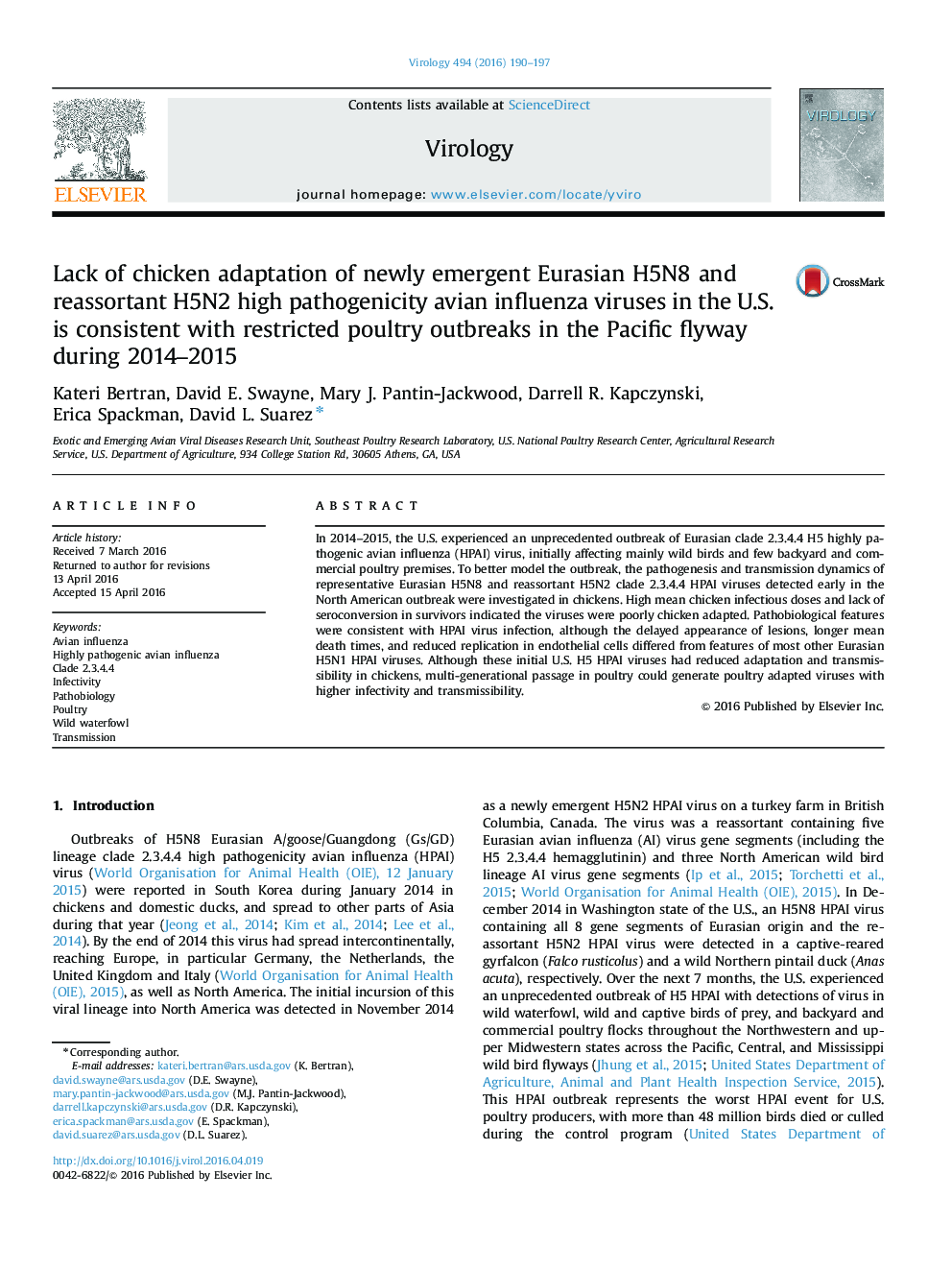| کد مقاله | کد نشریه | سال انتشار | مقاله انگلیسی | نسخه تمام متن |
|---|---|---|---|---|
| 6138457 | 1594223 | 2016 | 8 صفحه PDF | دانلود رایگان |
عنوان انگلیسی مقاله ISI
Lack of chicken adaptation of newly emergent Eurasian H5N8 and reassortant H5N2 high pathogenicity avian influenza viruses in the U.S. is consistent with restricted poultry outbreaks in the Pacific flyway during 2014-2015
دانلود مقاله + سفارش ترجمه
دانلود مقاله ISI انگلیسی
رایگان برای ایرانیان
کلمات کلیدی
موضوعات مرتبط
علوم زیستی و بیوفناوری
ایمنی شناسی و میکروب شناسی
ویروس شناسی
پیش نمایش صفحه اول مقاله

چکیده انگلیسی
In 2014-2015, the U.S. experienced an unprecedented outbreak of Eurasian clade 2.3.4.4 H5 highly pathogenic avian influenza (HPAI) virus, initially affecting mainly wild birds and few backyard and commercial poultry premises. To better model the outbreak, the pathogenesis and transmission dynamics of representative Eurasian H5N8 and reassortant H5N2 clade 2.3.4.4 HPAI viruses detected early in the North American outbreak were investigated in chickens. High mean chicken infectious doses and lack of seroconversion in survivors indicated the viruses were poorly chicken adapted. Pathobiological features were consistent with HPAI virus infection, although the delayed appearance of lesions, longer mean death times, and reduced replication in endothelial cells differed from features of most other Eurasian H5N1 HPAI viruses. Although these initial U.S. H5 HPAI viruses had reduced adaptation and transmissibility in chickens, multi-generational passage in poultry could generate poultry adapted viruses with higher infectivity and transmissibility.
ناشر
Database: Elsevier - ScienceDirect (ساینس دایرکت)
Journal: Virology - Volume 494, July 2016, Pages 190-197
Journal: Virology - Volume 494, July 2016, Pages 190-197
نویسندگان
Kateri Bertran, David E. Swayne, Mary J. Pantin-Jackwood, Darrell R. Kapczynski, Erica Spackman, David L. Suarez,